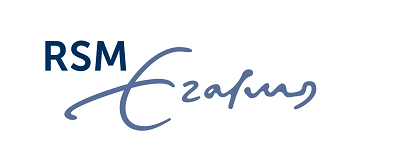- Innovation
Managing Creativity in Organizations
How companies need to control the supply and demand of creativity
Creativity propels products, advertising and marketing campaigns to rise above the competition, and from the Coca-Cola bottle to the iPad, creativity has underpinned the success of many of the world’s most successful companies. But the creative capacity of most companies is limited and managers need to understand how to use it effectively.
Research from RSM Professor Emeritus Berend Wierenga, ESSEC’s Professor Niek Althuizen and Professor Bo Chen of Sungkyunkwan University, looks at how managers need to know how to stimulate different types of creative ideas on a sliding scale from more original to more useful and how to match these to marketing needs.
The researchers point out that creativity consists of two distinct elements: originality and usefulness. E.g. An arresting advertisement might use a creative idea that has a high level of originality; whereas a new product might use a creative idea that builds on existing features, making it low on originality but highly useful in terms of satisfying consumer needs.
They also say that creative ideas come mainly through 3 processes: fluency, persistence, and flexibility.
Fluency is about creating a large number of ideas, hoping some are bound to be brilliant.
Persistence involves digging deeper, using ‘within the box’ thinking to make incremental changes.
Flexibility involves switching between idea perspectives with ‘out-of-the-box’ thinking to find radical innovations.
Managing creativity begins with framing the challenge as a supply and demand situation. On the demand side, managers have to deal with the marketing mix – the four Ps – promotions, products, place and price, each requiring a variety of creative ideas. On the supply side, they must identify and manage the individual and organizational resources that can generate creative ideas, taking account of staff capabilities, employment practices and managerial support.
The following extract from an article about this research, published in the latest issue of RSM Discovery, highlights 8 action points for managers:
- Choosing between originality and usefulness. Does your marketing need require a creative idea that is more original or useful? Consider this carefully before choosing the process through which you will generate your ideas. Which marketing domain is it – advertising or pricing, for instance? What are the specifics, constraints, and objectives? Is it a utilitarian product or hedonistic? What is your budget?
- The right process for the desired outcome. In the early phases of a project, the fluency process is a good option for generating a wide range of interesting ideas, some of which could be explored further. When incremental innovations are sought, the persistence process will deliver original yet useful ideas. For radical innovations, opt for flexibility: focus on breadth, use across category idea generation for the most original ideas.
- Allocating individual resources to the task. Recruit creative, experienced, and motivated individuals to take on the task. Ask to see a creative portfolio, or use creative ability tests such as the Torrance Tests of Creative Thinking. You can also outsource the task to specialist agencies or consultants, or solicit creative input from consumers. Boost the creative performance of existing employees with creativity-enhancing practices, such as exposing them to creative employees, or through creativity training programs.
- Tackling creative tasks with teams. When a task requires in-depth exploration of an ideas category (persistence), compose your team of individuals with substantial expertise within the target domain or analogous domains. When a task demands a large numbers of ideas (fluency) or a considerable breadth of diverse ideas (flexibility), compose your team of individuals with diverse backgrounds and expertise.
- Choosing the right creativity-enhancing practices and tools. Offer creativity training or workshops for employees who want or need to strengthen their creative thinking skills. Depending on the task, more domain-specific training may be offered. If individuals are not intrinsically motivated, motivate them extrinsically with a reward system that recognises individual contributions. Carefully chosen input constraints (time, money, materials, etc.) can stimulate a deeper exploration of the idea space (persistence pathway).
- Adopting the best management style. Employ a supportive and encouraging management style without engaging in close monitoring, which could stifle employee creativity. Empower employees by tolerating failure, encouraging risk taking, and letting them do their job in an autonomous manner. Feedback should be developmental and creative co-workers can serve as role models.
- Selecting the right IT-enabled tools. IT-enabled creativity support systems have been spurred into existence by our demand for creative ideas. These use various stimulation tactics to deepen or broaden an individual’s search for ideas. The best tools should offer support for knowledge activation as well as idea production.
- Assessing the outcome(s) of the creative task. Evaluate the creativity, originality, and usefulness of the generated ideas with the help of two to three domain experts or a survey of target consumers. Pilot test the best ideas within the organisation or within a consumer focus group. If a creativity enhancing technique has been used, assess its effectiveness in terms of idea quantity and quality. If necessary, adjust the procedure used to obtain the ideas. Assess the likelihood of success and potential resistance for highly original ideas. Where ideas have been implemented, document the results in terms of sales and profitability.
Read the full article in RSM Discovery
Access the original research paper: Managerial Decision-Making in Marketing: Matching the Demand and Supply Side of Creativity, Niek Althuizen, Berend Wierenga, and Bo Chen, was published in the Journal of Marketing Behavior, 2016, 2: 129–176.
One of Europe’s leading business schools, and ranked among the top three for research, RSM provides ground-breaking research and education furthering excellence in all aspects of management.
ARTICLES YOU MIGHT LIKE
VIEWPOINT
Cognitive neuroscientist, Lynda Shaw, explains how to understand and support intrapreneurs
DEVELOPING LEADERS QUARTERLY MAGAZINE AND WEEKLY BRIEFING EMAILS


































